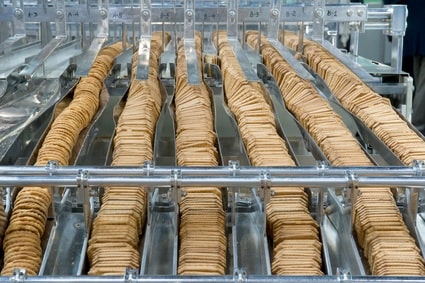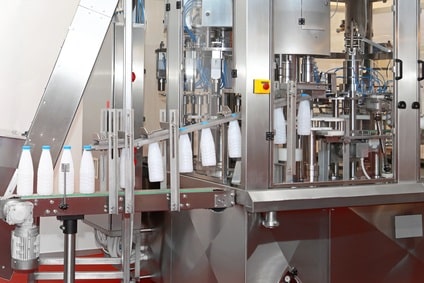Robotics and Automation in the Food Industry: What Manufacturers Need to Know


Just as bustling e-commerce businesses are scurrying to adopt as much robotics and automation as possible to bolster efficiency, so are many other industries that deal heavily in distribution. This sort of production “space race” is an important one as the global population grows, but for food manufacturers who make a business out of producing perishables, implementing this high technology is swiftly becoming a means to survival and even prosperity.
Perhaps unsurprising, this strange new world of high-tech food system labor can be a confounding one for manufacturers; although any smart operation is likely willing to invest in tools that promote streamlined throughput, they are working in an industry that is riddled with stringent compliance and labor laws galore. How could a production facility shift its infrastructure to make room for automated or robotic elements without going through a risky procedural overhaul?
Here are some ways in which robotics and automation both solve and trigger problems for today’s food manufacturers.
If you work in food manufacturing, then you likely have an intimate understanding of the hygienic design principles, the ones in which governing bodies, such as the USDA and FSIS have set to safeguard the public. One of the trickiest parts of adopting and integrating automated or robotic components into a food production facility is the fact that, you, as the producer, must be well aware of the equipment’s hygienic capabilities long before the investment is made. 
Let’s consider the issue of contact surfaces, as an example. According to guidelines devised by the aforementioned governing bodies, these surfaces must contain the following qualities:
The USDA provides classic examples of food contact surfaces which include conveyor belts, table tops, saw blades, augers, and stuffers. That said, they are defined as any surface that food products, whatever form in which they may be, touch. This means that the robotic and automated components must adhere to these standards; even though these tools are high-tech, it doesn’t give producers a pass to skip over the hygienic design principles.
Bear in mind, all contact surfaces must be smooth, meaning the Ra should never exceed 0.8µm. Do your due diligence to ensure that your equipment supplier understands the compliance design and can deliver on it, too. And, don’t forget that these agencies also have special demands for machine construction, including specific fastener and weld placements. Each and every piece of equipment should be very simple to deconstruct and sanitize, even if its surfaces never make direct contact with the food being produced.
Ever since automated and robotic elements first hit the food production world, there has been a general consensus that, while the components might be good for the manufacturer, they are no doubt bad for the worker. That said, some argue that the implementation of automation and robotics can actually help both parties – the technologies assist workers for optimized, less ergonomically-stressful work days and solve the issue of labor shortages for companies.
In an interview with Food Tank, Brandon Alexander, co-founder of Iron Ox, a robotics firm that helps manufacturers optimize plant growth, says that his company’s products allow farmers to hit their goals, even when human labor is insufficient. “The biggest issue [farmers] had was labor scarcity,” Alexander reports. “That was a big impetus behind us using robotics. We need to be producing more food, but less people want to be doing it.”
Ostensibly, not everyone, particularly labor unions in the food sector, is jumping to agree with Alexander’s views. That said, implementing robotic components can be used in a variety of ways – they can enhance worker performance, stand in during times of labor shortages (specifically for companies who operate in sparsely-populated locations), and, of course, supplement a workforce during peaks.
In an editorial penned for Food Safety Magazine, Steve Davis, Ph.D., a lecturer in manufacturing automation and robotics at the University of Salford, UK, brings up an important point in regards to automation adoption and strategic planning. According to him, there are two different ways to look at automation and robotic implementation: through fixed automation solutions and non-fixed automation solutions. 
For example, if a facility turns out a certain item that is “high-volume, long-life, or a single product,” then they are likely well-suited to integrate fixed automation solutions. This means the investment of machinery that will be used for the same tasks, well into the future.
On the other hand, not every facility is fortunate enough to have such a clear-cut inventory situation. In those cases, implementing automation and robotics can be tricky, as the initial investment is often too high for operations with unclear futures. Having said that, these companies would be best to look into more light-weight, flexible technologies that have the ability to keep up with changing needs and facility infrastructure.
For many food manufacturers, robotics and automation are fairly new frontiers, but with enough strategic planning and keen labor market insight, these technologies can greatly bolster efficiency.
Our sales engineers are experts in automatic asset tracking, tagging and identification,a nd can answer all your questions. Get in touch now.
Lets Talk ›